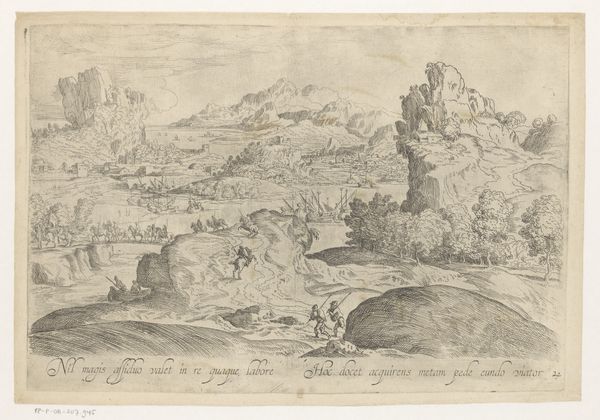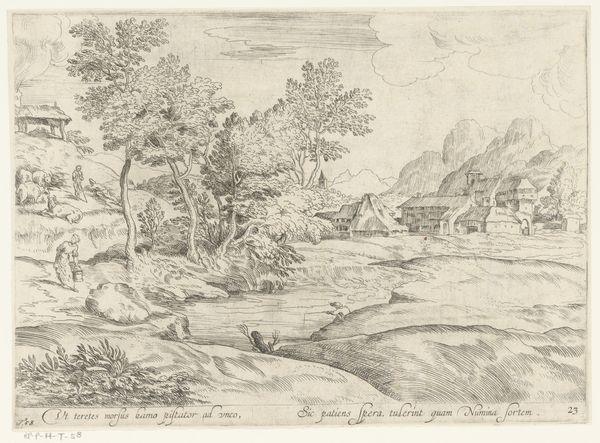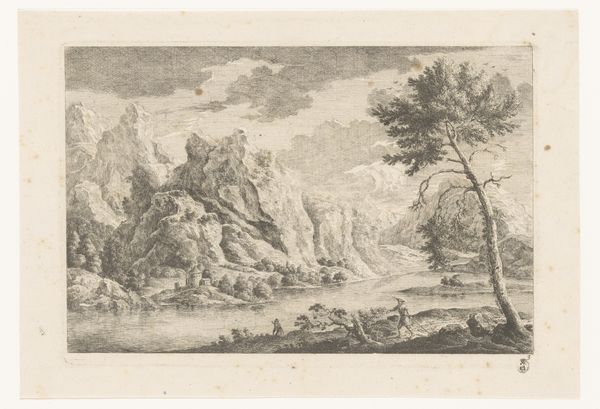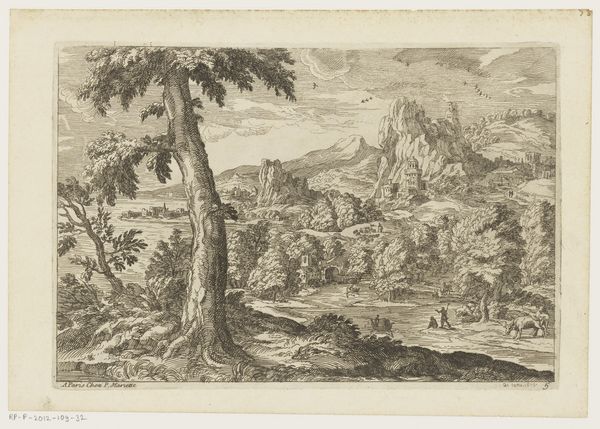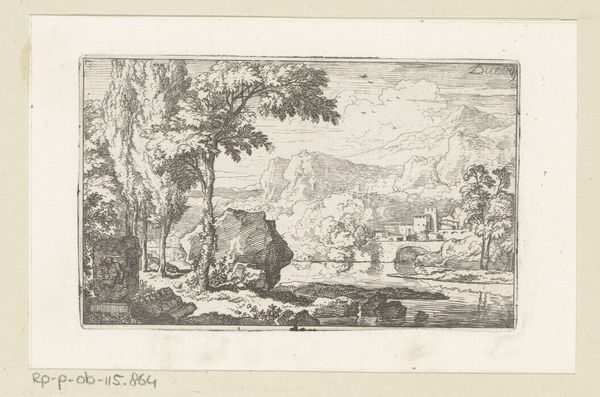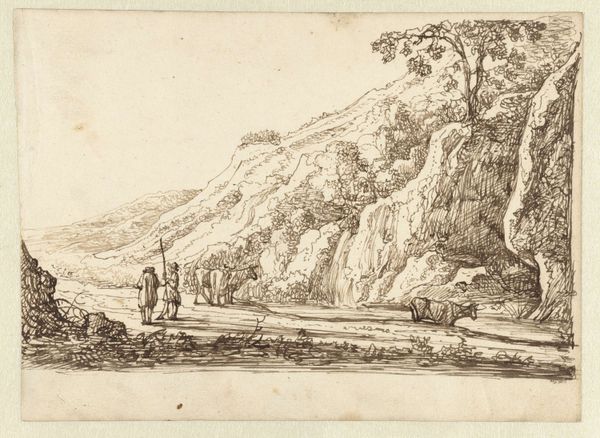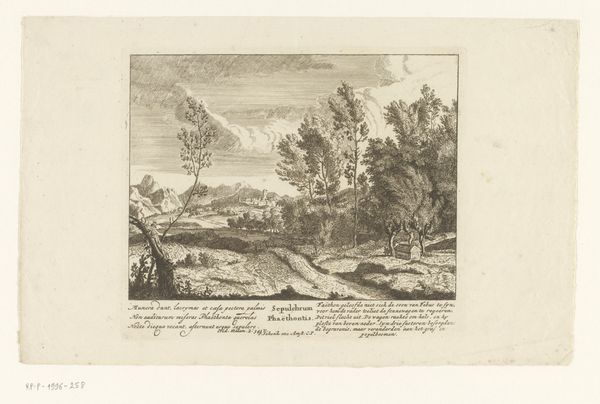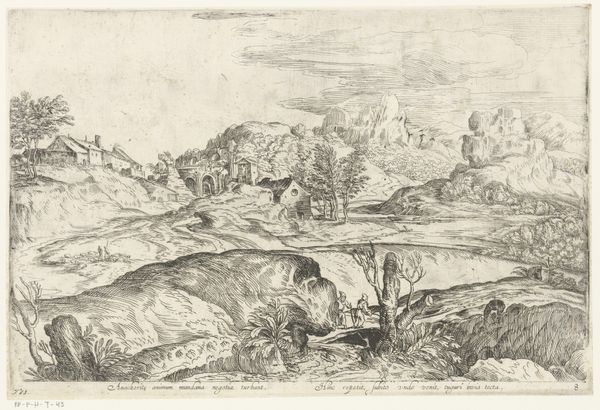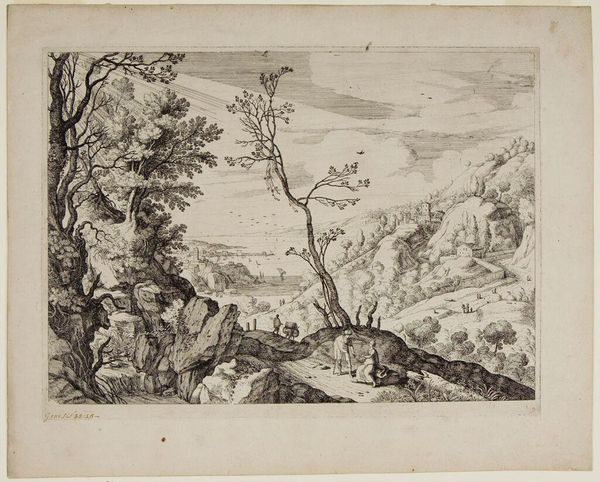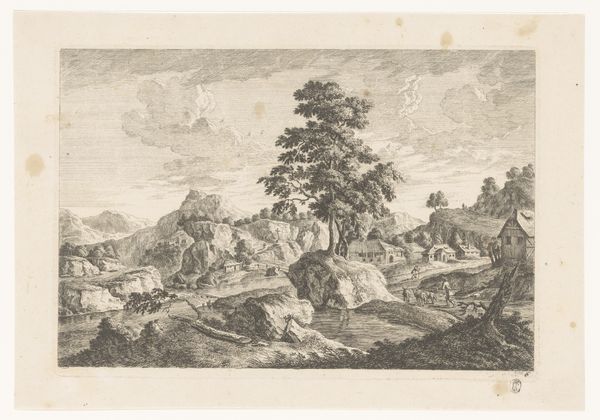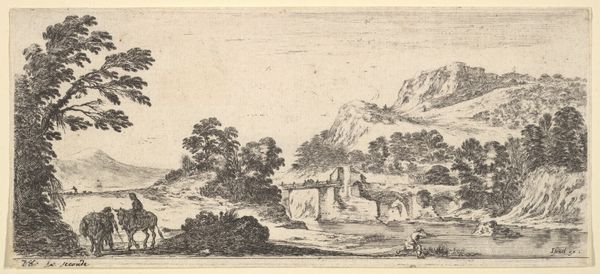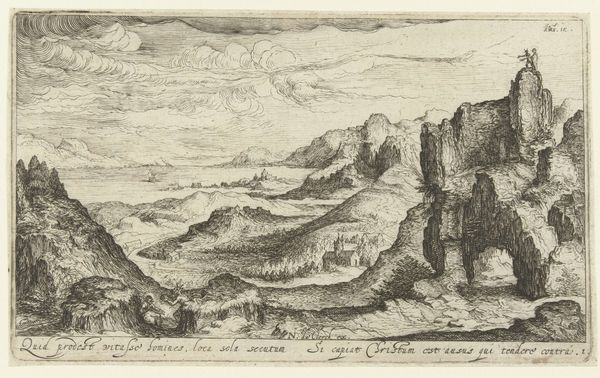
print, engraving
# print
#
landscape
#
mannerism
#
figuration
#
line
#
history-painting
#
engraving
Dimensions: height 173 mm, width 263 mm, height 131 mm, width 233 mm
Copyright: Rijks Museum: Open Domain
Editor: So this engraving, "Jupiter keert terug naar de Olympus" by Léon Davent, dates from around 1547 to 1550. I’m really drawn to the landscape – it feels both imposing and fantastical. What catches your eye when you look at this piece? Curator: For me, it’s the process of creation itself. Engraving is a labor-intensive method. Look closely at the lines: each one is deliberate, the result of physical work shaping a metal plate to reproduce this image. What social context allowed for this sort of detailed labor? And who had access to it? Editor: That’s a great point. It must have taken considerable skill and time. How did this engraving circulate and to whom? Curator: Exactly! We must ask about the artist's role as a producer in this society and the value placed upon the creation of imagery. This was not mass production. This craft aimed to create, control and disseminate narratives for specific audiences, a far cry from our means of art consumption today. Notice how Jupiter is a relatively small element of the composition? This may challenge any notion that "high" subject matter automatically equals "high" art. The artist has purposefully minimized that hierarchical relationship here. Editor: So you’re suggesting that the landscape and its creation might be more significant than the figure of Jupiter? Curator: Precisely! It calls into question how we even define 'art' when we examine it through the lens of materiality, labor, and accessibility. Were the means of image production—engraving, its tools, its labor, its costs, its potential for dissemination, and control of its meaning—as important as the depiction itself? It prompts questions about the values we project onto materials. Editor: I see. Examining the "how" and the "who" behind it provides a really fresh perspective on understanding the art. It helps contextualize it. Curator: It does, indeed. And that contextualization might offer clues as to why the artist has positioned Jupiter where he has, literally, above the earth.
Comments
No comments
Be the first to comment and join the conversation on the ultimate creative platform.
